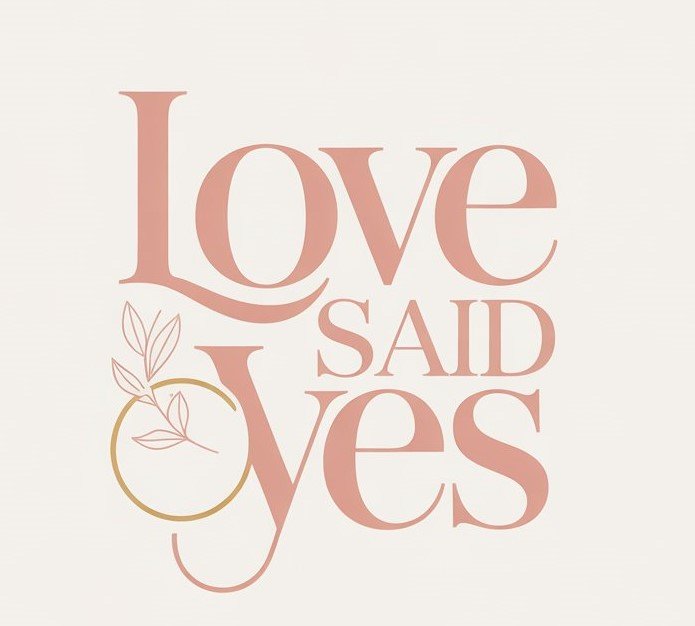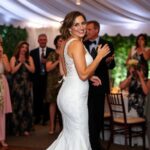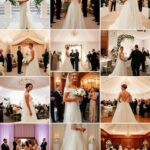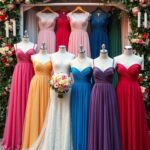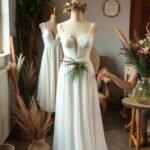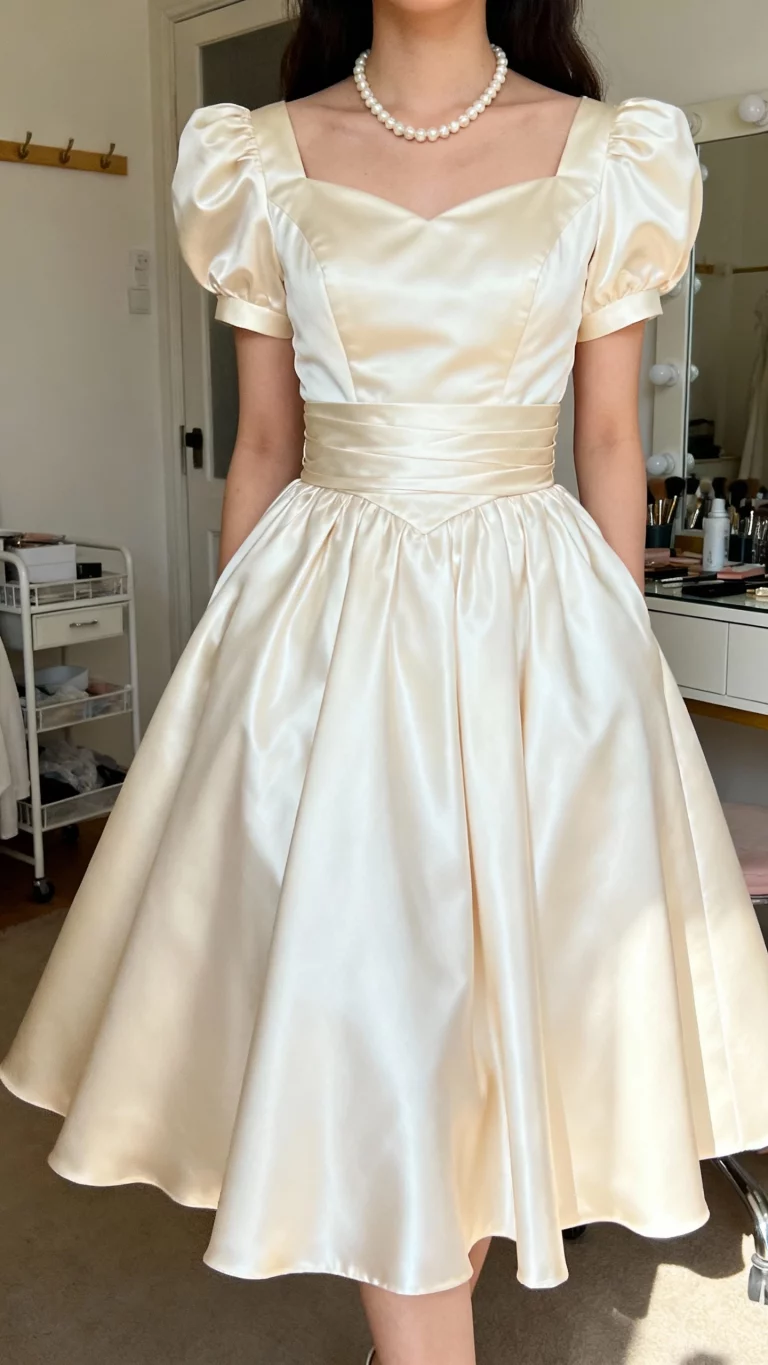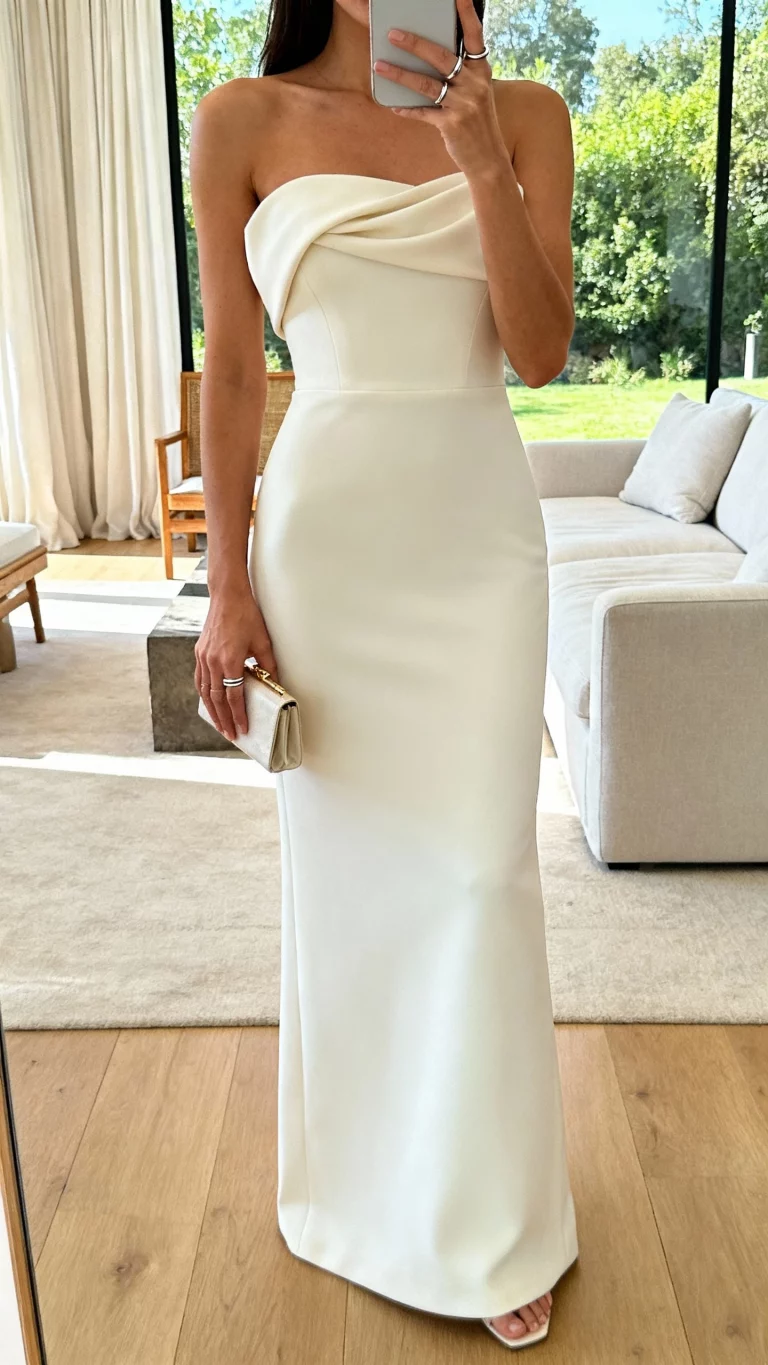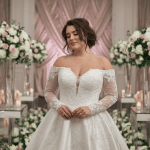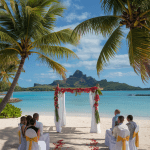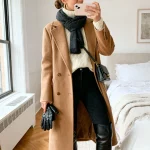Shopping for a wedding dress is often described as one of the most magical moments in a bride’s journey to the altar. For plus size women, however, this experience can bring both excitement and apprehension. Many still face challenges when walking into a bridal boutique, from limited sample sizes to assumptions about which designs they should wear. The joy of finding a gown that feels perfect can sometimes be clouded by these obstacles.
The industry has begun to respond to these concerns with greater inclusivity. Designers are offering wider size ranges, bridal shops are stocking more plus size samples, and imagery in magazines is slowly becoming more representative. Yet for many brides, the choice still feels overwhelming. Understanding how different silhouettes work with different body shapes can transform the process from frustrating to empowering.
Long gone are the days when plus size wedding dresses meant only conservative and shapeless designs. Today, gowns for curvier figures are as varied as they are stylish, with options ranging from sleek minimalist satin to dramatic ball gowns covered in lace. The sleeves, fabrics, and necklines chosen play just as important a role as the overall silhouette. When these elements come together thoughtfully, the result is a gown that feels both comfortable and breathtaking.
Price is another element every bride must consider. While luxury gowns from high fashion designers can run into the thousands, there are now plenty of accessible labels offering well made dresses in inclusive sizing. Online boutiques and ready to wear collections provide options starting from a few hundred euros. Alterations are almost always necessary, and brides should budget around ten to fifteen percent of the gown’s price for tailoring. A perfectly fitted gown, regardless of cost, always looks more elegant than a poorly fitted one.
Comfort is equally important. A wedding day is long, often stretching from early morning preparations until late night dancing. Fabrics with a little stretch, gowns with thoughtful boning, and designs that allow freedom of movement will keep the focus on the celebration rather than on physical discomfort. Plus size brides should feel free to prioritize how they want to move and feel in their dress as much as how it photographs.
At its heart, the search for a wedding gown is emotional. Brides want to look in the mirror and see a version of themselves that feels elevated, radiant, and true. With inclusivity on the rise and a growing awareness among designers, plus size brides now have the opportunity to find gowns that celebrate their individuality rather than disguise it. This guide explores the most common body shapes and offers detailed advice on which styles enhance each silhouette, while also encouraging flexibility and self expression.
Understanding Body Shapes
While no woman fits perfectly into one single category, knowing the most common body shapes can make the search for a wedding gown much easier. These categories provide a starting point and help narrow down the silhouettes that are likely to feel comfortable and flattering. Designers often build their collections with these shapes in mind, offering specific cuts and fabrics that enhance natural proportions.
The five most common body shapes are:
- Hourglass: bust and hips are proportional with a well defined waist
- Pear: hips are wider than bust and shoulders
- Apple: fuller midsection with slimmer arms and legs
- Rectangle: bust, waist, and hips are evenly balanced with less waist definition
- Inverted Triangle: broader shoulders or bust with narrower hips
These categories are not strict rules but helpful guidelines. Many women see themselves in more than one description or find that their shape changes slightly depending on posture, weight, or styling. The goal is not to label the body but to understand how different design elements can highlight features and create balance. A gown that works beautifully for one bride may not feel the same on another with the same shape, which is why trying on different silhouettes remains the most important step.
Hourglass Figures
For hourglass brides, the defining feature is balance because the bust and hips are naturally proportional with a waistline that creates an enviable curve. The best wedding dresses for this shape are those that highlight, rather than hide, that symmetry. Mermaid and fit and flare gowns are consistently popular because they contour the body closely before flaring at or below the knee, showcasing the waist in a striking way. Structured fabrics such as mikado or crepe can emphasize the silhouette, while softer overlays in lace or tulle add romance without losing shape. Brides who prefer modesty can opt for illusion long sleeves that cover while still showing skin, a detail that keeps the look light. Off the shoulder necklines are another flattering choice, drawing attention to the collarbones and creating a frame around the upper body. Accessories such as beaded belts or sashes further emphasize the waistline and add a personalized touch. Empire waist gowns can also work if the bride prefers a flowing look, though the effect is softer and less dramatic. Ultimately, hourglass brides have flexibility because whether the goal is red carpet glamour or timeless romance, the right cut will celebrate natural proportions rather than trying to change them.
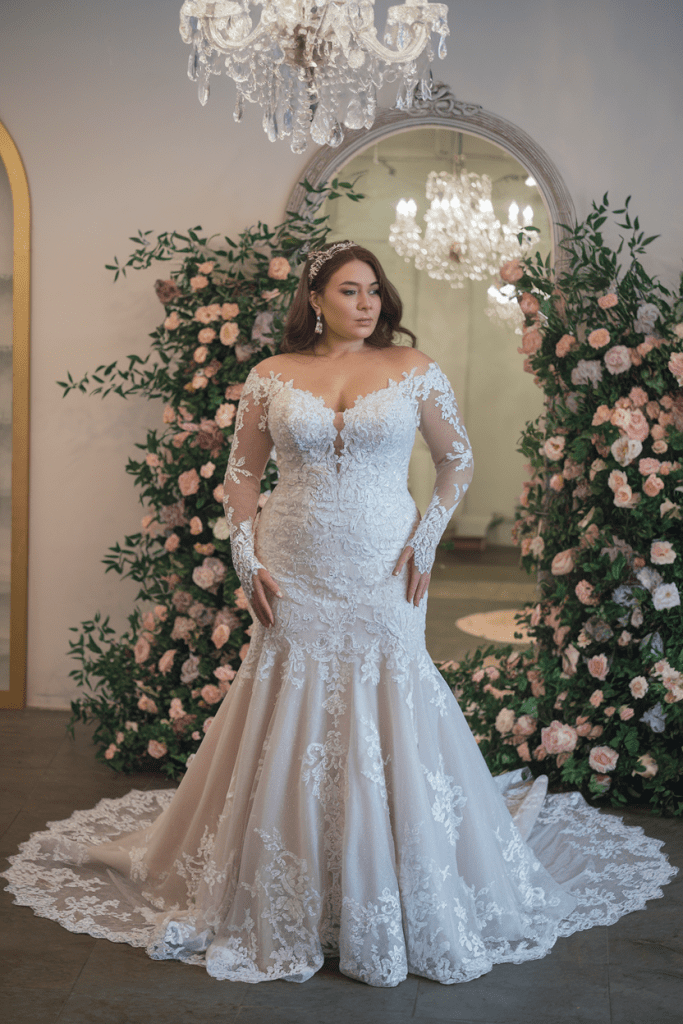
Pear Shapes
Pear shaped brides typically have hips that are fuller than the bust and shoulders, creating a silhouette that is bottom heavy in proportion. The key is balance and choosing gowns that accentuate the upper body while gracefully skimming over the hips. A line dresses are an almost foolproof option, as their fitted bodices highlight the torso and the gradual flare of the skirt flows over curves without clinging. Ball gowns also work beautifully, cinching at the waist while the dramatic skirt draws the eye outward in a balanced way. Brides who want to highlight their neckline can choose illusion or sweetheart necklines, paired with lace or beaded detailing on the bodice to add visual weight to the upper half. Long lace sleeves or cap sleeves can also shift focus upward while offering a sophisticated finish. Fabrics such as satin or organza in the skirt provide structure, while lightweight tulle creates a softer effect. Pear shaped brides should also consider strategic embellishments, as intricate beading on the top paired with a simple skirt creates an elegant, balanced look. With the right design, a pear shaped bride can walk down the aisle with her silhouette feeling harmonious, comfortable, and beautifully proportioned.
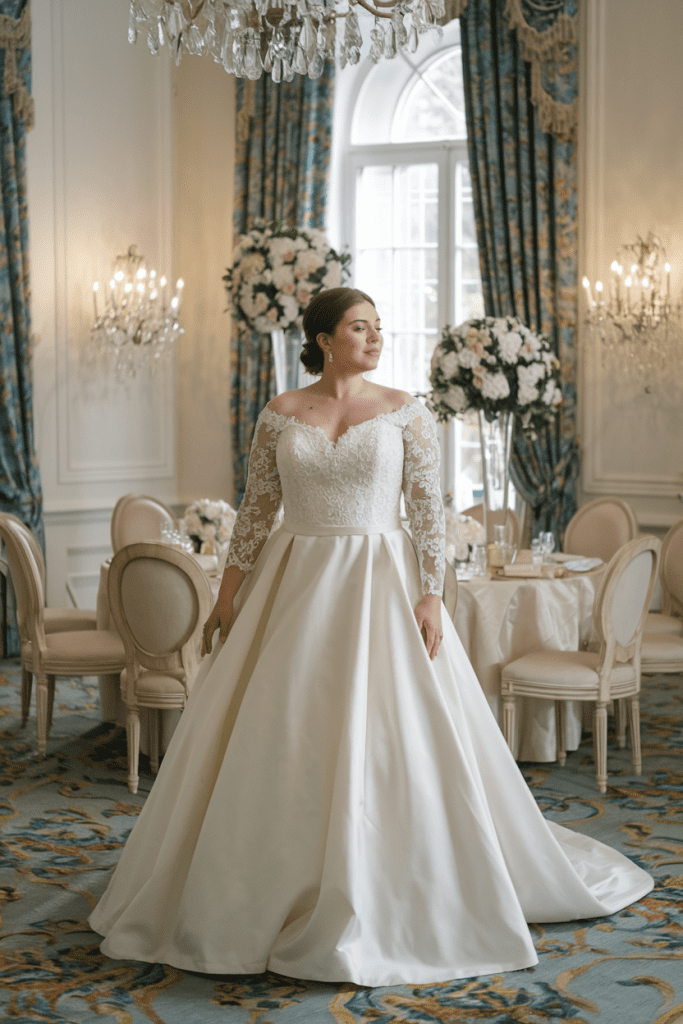
Apple Shapes
Apple shaped brides often carry more fullness around the midsection while having slimmer arms and legs. The goal is usually to elongate the torso and create definition at the waist, but without sacrificing comfort. Empire waist gowns are a classic solution because they draw attention upward toward the bust while allowing fabric to flow freely over the stomach and hips. Another effective approach is ruching or asymmetrical draping, which creates diagonal lines across the body and helps shape a more defined waistline. Brides who prefer structure may choose gowns with built in corsetry or boning, as these provide support while smoothing the silhouette. Fabrics such as chiffon and organza are particularly flattering because they create soft vertical movement rather than clinging. Necklines play an important role, with V necks elongating the upper body while illusion panels provide coverage without adding bulk. Long sheer sleeves or bishop sleeves give coverage in a light and elegant way that does not feel restrictive. For apple shaped brides, the key is fluidity and proportion because designs that skim and elongate will create a look that feels confident, graceful, and flattering.
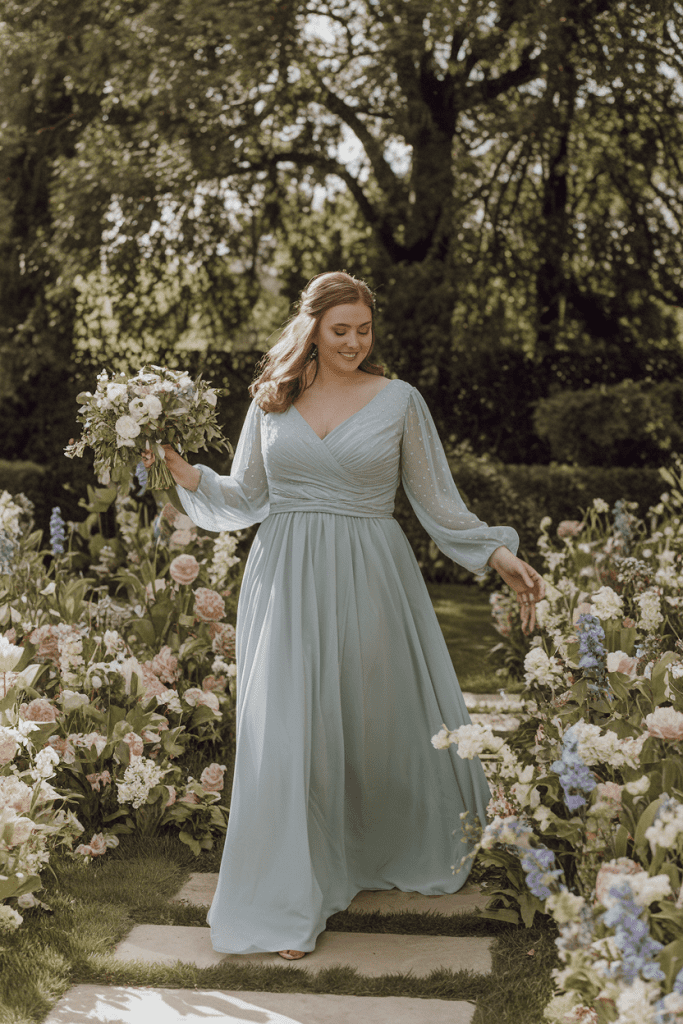
Rectangle Shapes
Brides with a rectangle body shape often have bust, waist, and hip measurements that are relatively even, creating a straighter silhouette. The goal is typically to add dimension and create the illusion of curves through strategic gown design. Ball gowns with voluminous skirts are a wonderful option, as they create contrast between the fitted bodice and the fullness below the waist. Sheath gowns can also work beautifully if they include details such as ruching, lace appliqué, or embellishment around the bust and hips to add definition. Belts or beaded waistbands are excellent tools for drawing the eye inward and defining the waistline. Fabrics play a crucial role here, with textured materials such as lace, embroidery, or layered tulle adding softness and shape to the figure. Sweetheart necklines or off the shoulder cuts can further enhance femininity by softening the upper body. Brides who prefer simplicity might look to minimalist gowns with clever tailoring, as seams and darts can create shape without overwhelming the look. In every case, the rectangle body shape benefits from gowns that add movement and detail in the right places, turning simplicity into elegance.
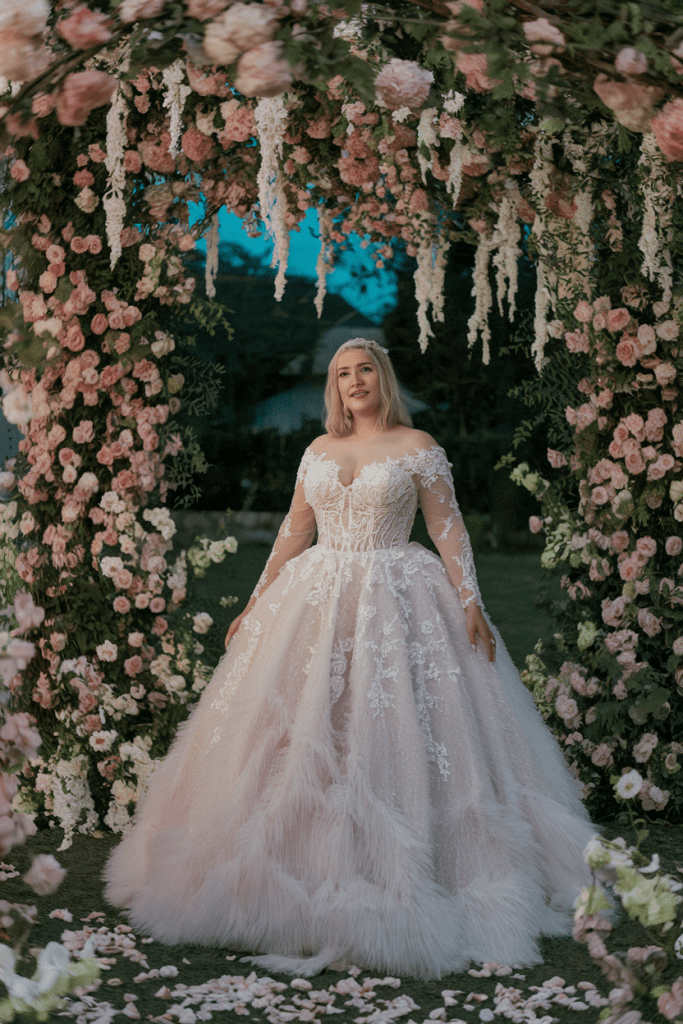
Inverted Triangle Shapes
Inverted triangle brides tend to have broader shoulders or a fuller bust, balanced by narrower hips. The key is to soften the top half and create volume on the lower half for a harmonious silhouette. A line and ball gown skirts are excellent choices because they add fullness below the waist to balance proportions. V necklines and wrap style bodices are especially flattering, as they elongate the torso while framing the bust in a graceful way. Brides may also consider off the shoulder styles, which draw the eye horizontally and soften broad shoulders. Long sleeves work well when they are lightweight or sheer, avoiding added bulk while still providing elegance. Fabrics such as chiffon or organza are ideal because they flow gently, keeping the look soft and romantic. Embellishments can be used strategically, with a detailed skirt and a simpler bodice helping to redirect attention downward. Brides who want structure can look for gowns with built in support, ensuring that the bust feels secure without overwhelming the rest of the silhouette. With the right gown, inverted triangle brides achieve balance, grace, and a look that feels both powerful and feminine.
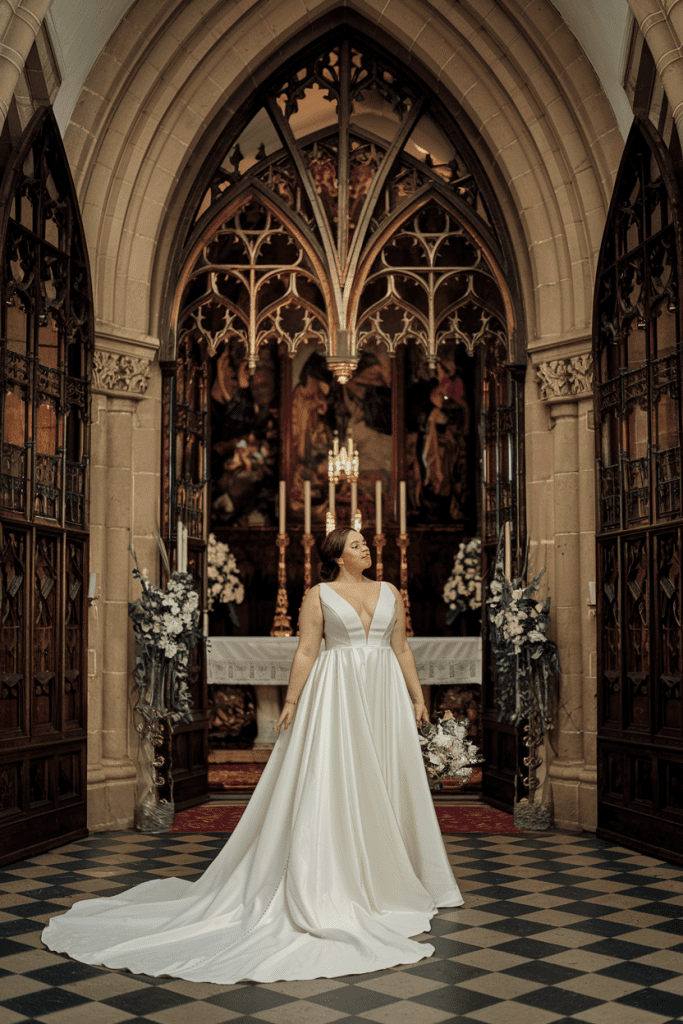
Summary
Finding the perfect plus size wedding dress is not about hiding or reshaping the body, but about highlighting what makes every bride feel most beautiful. Each body shape has silhouettes and details that enhance natural proportions, from curve defining mermaid gowns for hourglass figures to balanced A line skirts for pear shapes. Apple shaped brides shine in empire waists and flowing fabrics, while rectangle figures benefit from gowns that add texture and definition. Inverted triangle brides achieve harmony through V necklines and full skirts that balance the frame. Beyond body shape, comfort, price, and emotional connection are equally important in the decision. The right dress is ultimately the one that makes a bride look in the mirror and feel radiant, confident, and truly herself on her wedding day.
